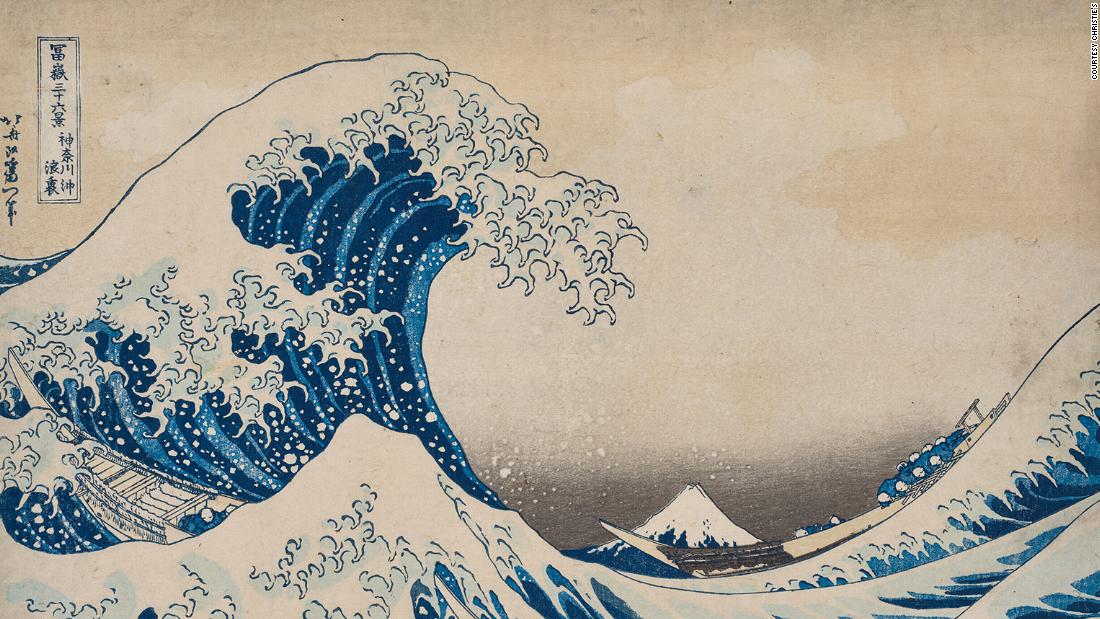
The 14.6-inch-wide artwork is now the most expensive piece by Japanese printmaker Katsushika Hokusai ever to go under the hammer, the auction house said.
Created in the early 1830s, the “Great Wave” depicts three fishing boats battling raging seas in what is today Japan’s Chiba Prefecture. It is part of a genre known as “Ukiyo-e” that saw artists mass-produce works on paper using woodblock printing.
Related video: The artisans keeping Japan’s woodblock print tradition alive
Experts are uncertain of how many copies of the “Great Wave” were initially produced, though there would have once been several thousand of them. The prints were not always as sought-after as they are today, however, and only a fraction are thought to have survived.
Korenberg added that prints of the “Great Wave” were inexpensive at the time, and would once have cost the same “as about two helpings of noodles in the mid-19th century.”
Part of Hokusai’s famous “Thirty-six views of Mount Fuji” series, the “Great Wave” is now among the world’s most widely reproduced images, appearing on posters, mugs, shirts and fridge magnets.

Hokusai’s “Koishikawa yuki no ashita (Snowy morning at Koishikawa)” also appeared at the auction, selling for over $30,000. Credit: Courtesy CHRISTIE’S
Listed under its full name “Kanagawa oki nami ura (Under the well of the Great Wave off Kanagawa),” the item was acquired by the previous owner’s family in the early 1900s and was once exhibited at the Glyptotek art museum in Copenhagen.
The record sale was part of a major auction of Japanese and Korean art that saw almost 200 artworks and antiquities fetch a combined $11.4 million.
The “Great Wave” print was among more than 10 works attributed to Hokusai that appeared in the sale. Also among them were prints depicting a waterwheel and a snowy landscape, both from his “Thirty-six views of Mount Fuji” series, that sold for $37,800 and just over $30,000, respectively.
The biggest sale of the day, however, was achieved by an 18th-century Korean “moon jar” — a white porcelain vessel made by joining two hemispherical halves — that sold for over $4.5 million.

